Is your Pest Control/Bed Bug Website and Landing Pages Fast Enough for Your Customers and Google?
Have you ever tried to access a site that took FOREVER to load?

“Page speed is one of the most overlooked and yet most important factors in customer attention, retention, and ultimately, converting browsers to buyers. Ensuring that you’re taking measures to increase page speed or reduce lag can be the difference between failure and success.”––as per Google Analytics Advocate, Krista Seiden.
Consequently, a fast loading website is vital when it comes to having a high rate of converting views into customers. A high conversion rate is a direct path to garner more revenue for your business. Today, optimizing your website’s page speed is proven to be a necessity for every business, much more than just a trend you can miss out.
Page speed reduces your bounce rate and keeps from driving away your impatient prospects. Do you know that a recent study shows that over half of your visitors would not have left your website if it wasn’t for slow load times? Just how many seconds are we talking about here?
Here are the hard facts:
47% of people expect your site to load in less than 2 seconds.
40% will abandon it entirely if it takes longer than 3 seconds.
You have less than 3 seconds to capture a reader’s attention and greatly increase probability that they become a customer.
Google is pro ‘user experience’
Google announced on their webmaster central blog back in 2010 that website speed would begin to affect search engine rankings. As the number one search engine, by a wide margin, Google will promote the best user experience with speed being a major factor.
“2 seconds is the threshold for e-commerce website acceptability. At Google, we aim for under a half second,” as per Senior Principal Product Manager of Google, Maile Ohye’s comment on how fast a website loads in 2019.
How can you evaluate your website?
Check if your website is fast, slow, or way too slow. Third party tools have been created to help you gauge just how fast or efficient your platform runs in the marketing game.
Aside from google’s speed test, you can try Pingdom to gauge the site with the ideally accepted corresponding seconds:

| 0 – 1.5 sec | excellent |
| 1.6 sec – 3 sec | fair |
| 3+ sec | needs improvement |
It all boils down to one simple solution––SPEED UP your website.
How can I make my website faster?
(1) On-site structure–– as far as speed is concerned, a great system foundation and maintenance is essential. Use efficient tools that will run cost-effectively and won’t drag so much data–– with these key techniques: compress files; minimize codes; use a caching tool; and reduce image size.
a.) compress files – an example of a compression tool that you may try is Gzip. This type of program tool can reduce the size larger than 150 bytes of your HTML, CSS, and JavaScript files.
b.) minimize codes – formats, comments, and unused codes can be minimized without retaining very heavy data. A few recommended resources are HTMLMinifier to minify HTML, CSSNano and/or csso for CSS, and UglifyJS or Closure Compiler to minify JavaScript.
Alternatively, PageSpeed Module integrates with web servers to automatically optimize your site including resource minification.
c.) use caching tool – this reduces the load on your web server especially for users that revisit the site. Browsers cache information from static files––stylesheets, logo, images, JavaScript files, and more. The benefit-cost ratio is high and easier for them to go back.
To add, a tool like YSlow is used to see if you already have an expiration date set for your cache. Then set your “expires” header for how much longer you want the information to be cached, also depending on how frequent you change the design.
d.) optimize images – One factor that can greatly affect how a page loads up is on how the images are being formatted and cannot be any larger than necessary. Compared to the codes where you use Gzip, for images, software like Photoshop is very useful to convert the photos in a smaller size while you can still retain its quality.
(2) Off-site Tools > Use content distribution network (CDN) – this consists of a group of servers that are strategically placed across the globe to deliver cached static content to CDN website visitors for faster and more secure browsing.
Whether you’re expecting (or not) a spike in traffic, a content distribution network can help mitigate any downtime that you may otherwise occur. Also, it lessens DDoS attacks either manually from the dashboard or by default via the CDN provider themselves.
(3) Reliable and Fast Host –– A web host is responsible for providing a respectable space and online accessibility for websites. The first best thing is to invest in a good platform that has proven and tested performance.
With the right web host, this allows your website to be able to customize content, grow, and promote healthy traffic and interaction among users. A few honorable mentions are Cloudways, InMotion, and Unbounce.
Bottom line:
Speed benefits a lower bounce rate, a higher click-through rate, higher conversion rates––making it the edge for e-commerce sites.
Did you find this article helpful? You may visit our site as we tackle on how we incorporate our SEO knowledge for our clients in the bed bug and pest control industry. Call us for a free consultation.

